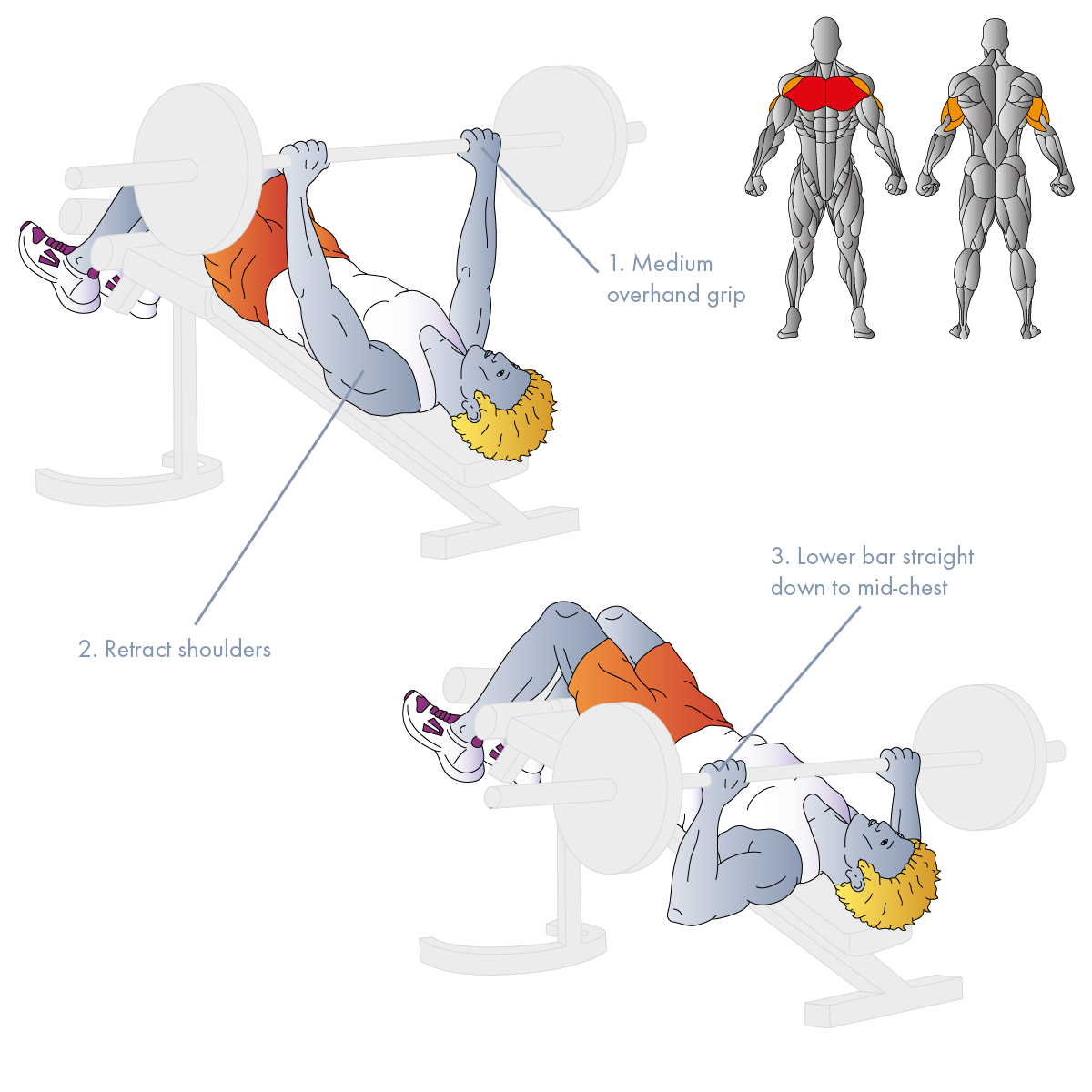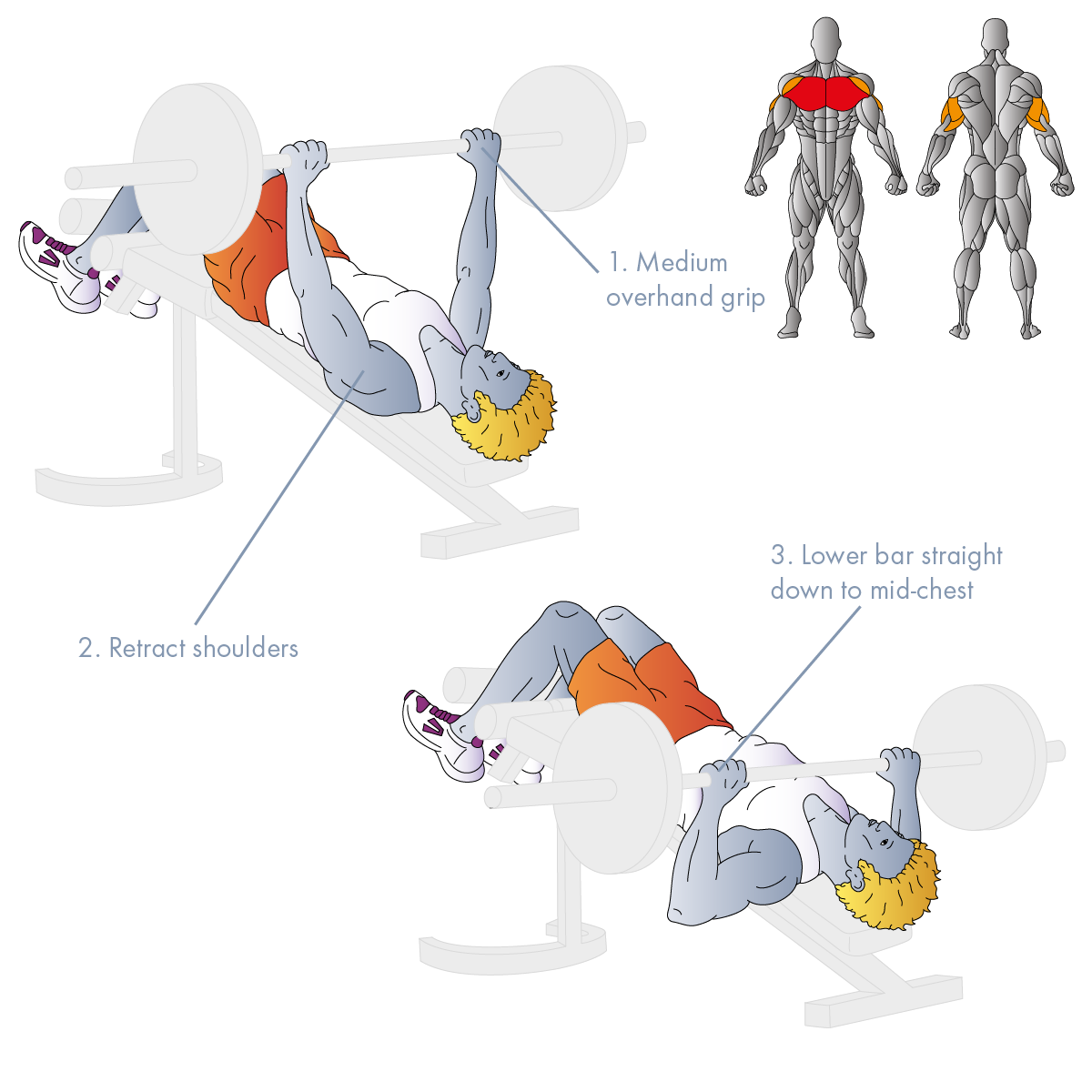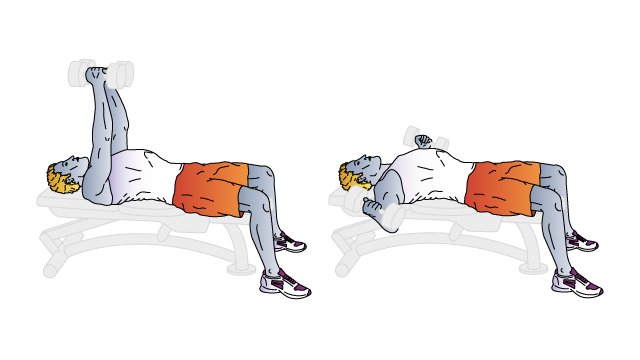DECLINE BENCH PRESS

Whilst there is still much debate on whether the Decline Bench Press is any better than the mighty Flat Bench Press, there is no doubt that it can build impressive upper body power, strength, and muscle. Many actually swear that it stimulates their pectorals to a greater degree, especially the lower – sternocostal – portion, primarily due to the greater range of motion offered, which is important if you’re interested in developing a round, wide, and defined chest. Furthermore, the Decline Bench Press variant activates your anterior deltoids to a lesser degree than the Flat Bench Press, thereby allowing you to better isolate your pectorals for a greater pump. Additionally, if you feel any pain or discomfort whilst performing the Flat Bench Press this variant may be the answer to alleviate it since it also reduces strain on your lumbar spine region.
Skill Level: Intermediate
Training: Strength
Type: Compound
Force: Push
Equipment: Flat Bench, Barbell
1° Muscles: Pectorals
2° Muscles: Triceps, Deltoids
SET-UP
- If adjustable, set the height of the rack and load an appropriate weight to the bar.
- Secure your feet at the end of the decline bench, then watching out for the bar so you don’t hit your head, lie back on it.
- Adjust your position so your head is roughly under the bar.
- Grasp the barbell with a medium overhand (palms facing forward) grip so your hands are just wider than shoulder-width apart.
- Unrack the bar so that you hold it above the center of your chest with your arms fully extended, but avoid locking your elbows.
EXECUTION
- Unrack the bar, then inhale as you slowly lower the bar straight down toward the middle of your chest, until the bar lightly touches it.
- After a brief pause, exhale as you slowly raise the bar in a straight line back up to the start position.
- Repeat for the prescribed number of reps and sets.
- Place the bar back on the rack.
- Use a spotter; if one is not available, be realistic about the amount of weight used.
- Grip the bar with your thumbs wrapped around from the front - this is the only safe way to bench!
- Whilst the decline angle of this lift promotes a fuller range of motion, this can seriously be hampered if your grip is too wide. Position your grip so that your forearms are pretty much vertical at the bottom of the lift.
- Avoid letting the bar drift backward or forward; it should be raised and lowered vertically to the middle of your chest.
- Keep your elbows tucked in close to your body as you lower the bar.
- At the top of the lift avoid locking out your elbows as this will take the pressure off the target muscles making the exercise less effective.
- Do not bounce the bar off your chest; move it in a controlled fashion through the full range of motion down to your chest.
- Focus on using your chest muscles as you push the bar up, and at the top of the lift squeeze them.
- Whilst a certain degree of arching your back is fine, especially when using heavier weights, avoid hyperextending it to the extent where your hips raise off the bench. Both your shoulder blades and glutes should remain in contact with the bench throughout the entire exercise.
- The tempo of the exercise is important. It should be should slow enough to force you to control the weight on the way down. Avoid letting the weight drop since your muscles will not work as hard on the negative phase of the lift. A good basic tempo would involve taking twice as long to lower the weight as it takes to raise it.
- Some lifters do not move the bar all the way down and all the way up because they are using very heavy weights. Whilst this technique is good for shocking muscles, a ‘general purpose’ approach should use a weight that allows for the full range of motion.
- Incline Bench Press
- Flat Bench Press
- Dumbbell Press
- Push-Ups
- Dips/Weighted Dips








